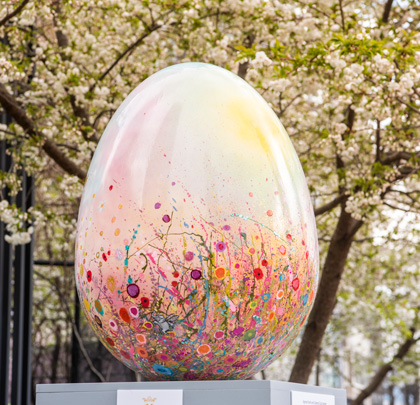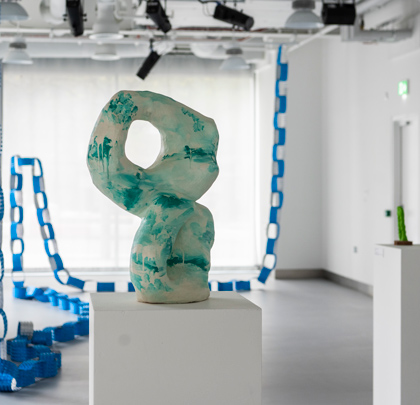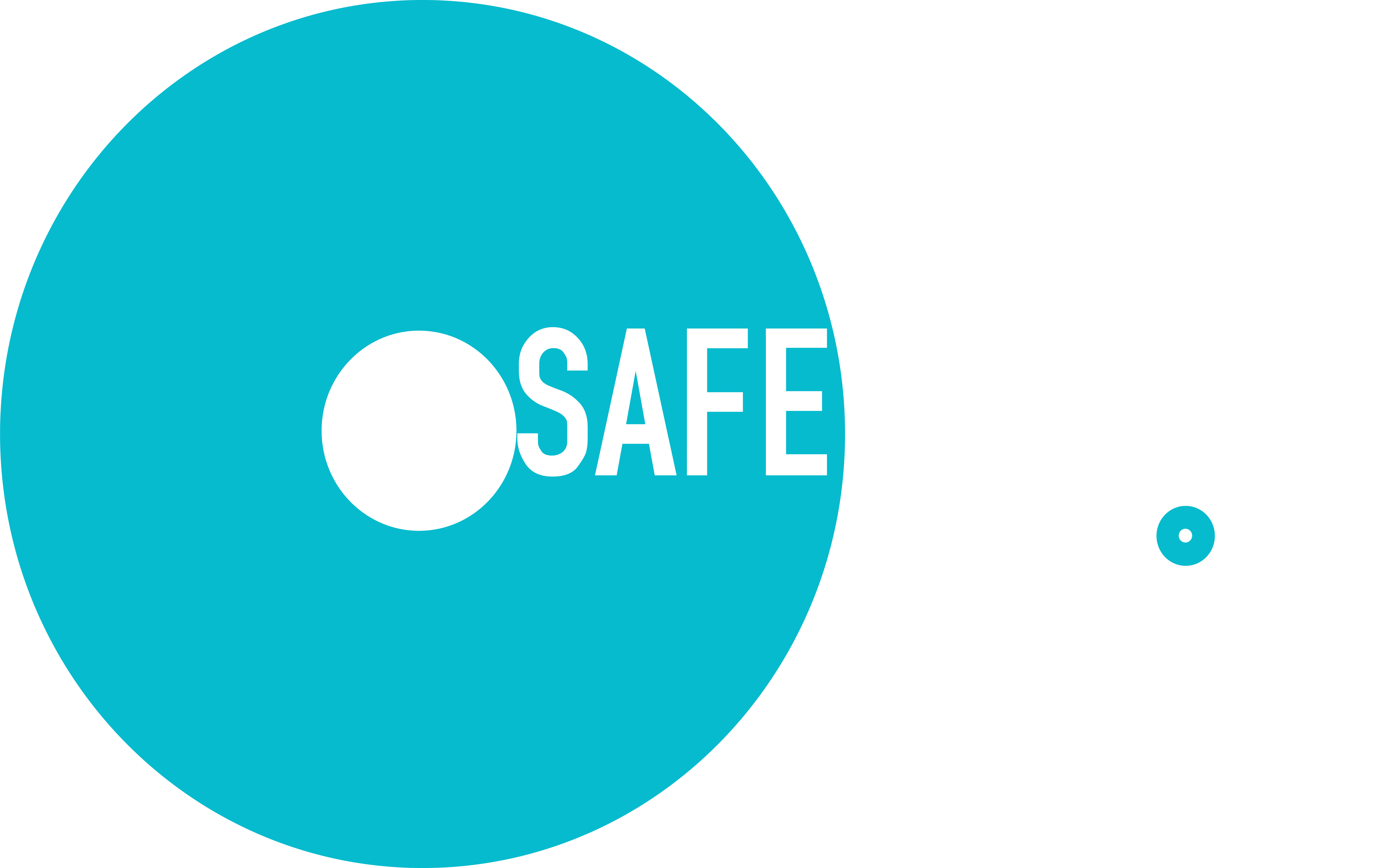The newest addition to Canary Wharf’s permanent art collection can be found leaping from the dock at Water Street in Wood Wharf! Comprised of 5 tonnes of plastic waste pulled out of the ocean, Whale on the Wharf stands as a reminder of the millions of tonnes of plastic waste still swimming in our oceans…
Scientists estimate there are over 150 million tonnes of plastic in our oceans, with an estimated 8 million tonnes added every year. That means, pound for pound, there is more plastic waste in our oceans than there are whales. In order to show just how much plastic waste produced by our cities ends up in our waterways, the artist/architect duo Jason Klimoski and Lesley Chang (StudioKCA) worked with the Hawaii Wildlife Fund to pull as much of it as they could from the Pacific and Atlantic Oceans in just under 4 months, and then shaped that waste into Whale on the Wharf, the colossal whale breaching the dock’s waters in front of you.
Canary Wharf’s commitment to sustainability extends beyond the recycled plastic used in the sculpture. The sculpture is supported by a new braced steelwork structure submerged underwater which has been designed and fabricated from recovered and reused steel, as well as a special bespoke concrete mix for the foundation. The design has been carefully considered to reduce its carbon footprint and follows the sculpture’s philosophy of re-use and the circular economy. The foundations use a concrete mix incorporating circularity principles to minimise our use of virgin materials and lower embodied carbon.
In an impressive display of sustainability and circularity, the structure of Whale on the Wharf is thought to be the first of its kind to use waste coffee grounds, collected from Canary Wharf coffee shops, to produce a new material that supplements the sand and fine aggregates used in concrete to form the foundations for the sculpture. Through the process of pyrolysis, the waste coffee grounds become a new material known as biochar, adding this to the concrete mix reduces the strain on virgin materials and halts the release of CO₂ if left to biodegrade as waste coffee grounds. This has helped to significantly lower the embodied carbon of the concrete. Further research has shown that biochar potentially enhances the properties of concrete, meaning that less cement is needed and further reduces the embodied carbon.
At Canary Wharf Group (CWG), we have implemented a comprehensive waste segregation system to ensure that waste is properly sorted and recycled. This system plays a crucial role in reducing landfill waste and promoting a circular economy. By segregating waste into categories such as plastics and organic matter, we can effectively recycle and repurpose materials, minimising our environmental footprint.
To read more about Canary Wharf’s Environmental, Social and Governance strategy, visit our ESG pages.
Whale on the Wharf is just one piece within the Canary Wharf public art collection. With over 100 artworks, the Wharf is punctuated with beautiful forms that stimulate, inspire, or simply give pause for thought. Discover our Art Map or Digital Art Guide on Bloomberg Connects to keep discovering.

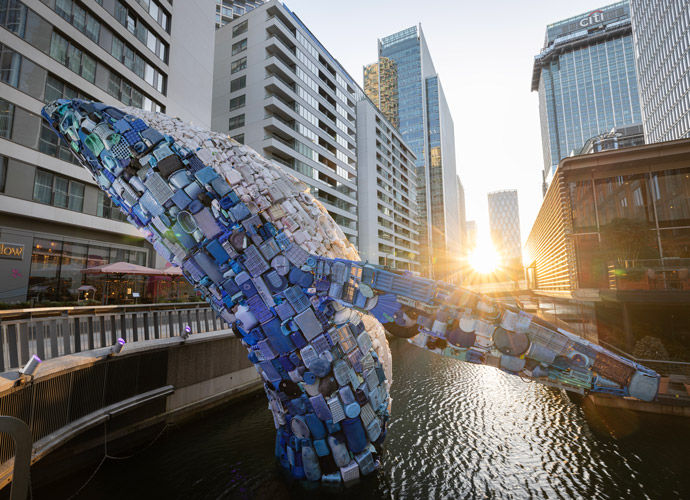
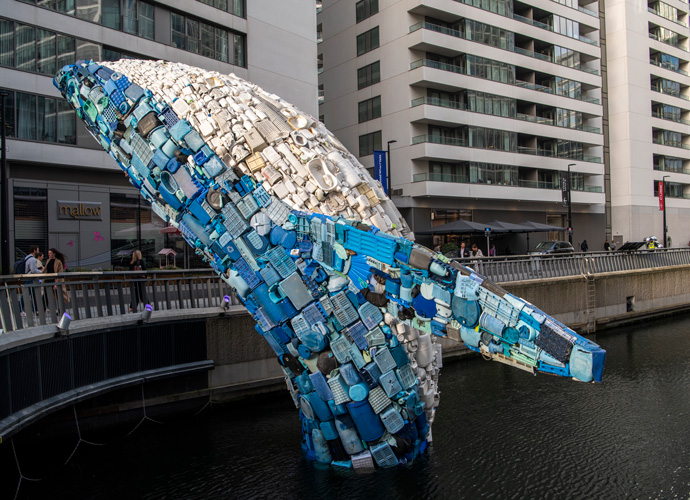
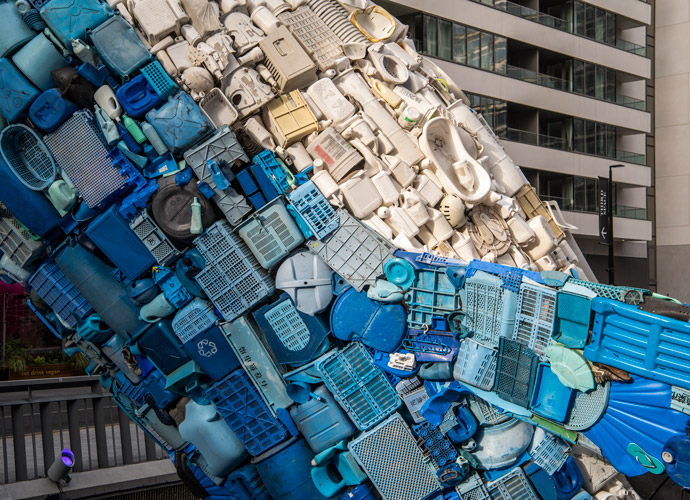
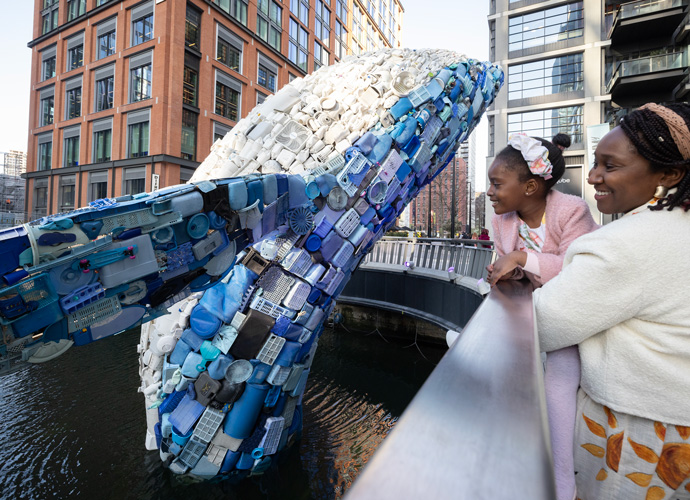
 share
share 
